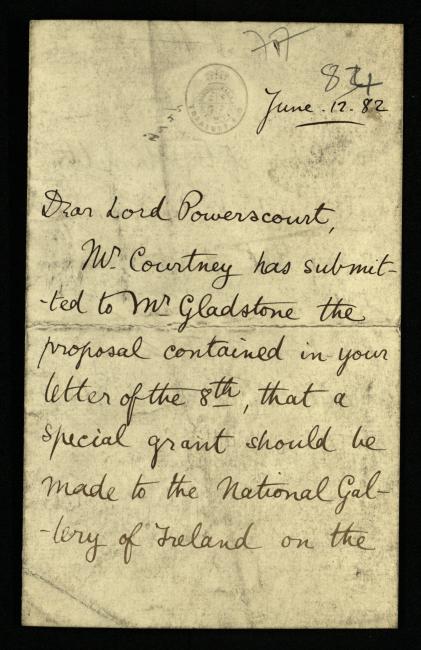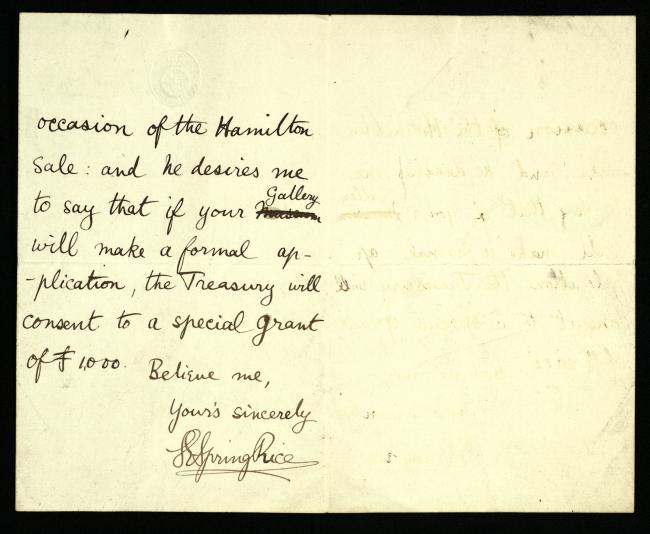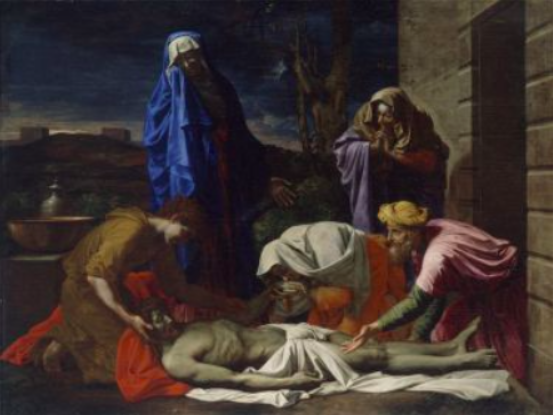Henry Edward Doyle (1827–1892) & Mervyn Wingfield, the 7th Viscount Powerscourt (1836-1904)
Succeeding George Mulvany (1809-1869), Henry Edward Doyle (1827–1892) became Director of the National Gallery of Ireland in 1869. Educated in London, Doyle worked for a time as an illustrator and wood engraver. He was also a painter, and a number of his works are in the Gallery’s collection. His directorship was marked by an innovative re-hang of the collection, as well as significant acquisitions, despite limited funds. His Directorship also saw the establishment of the National Portrait Gallery which opened in 1884.
An Irish peer, Mervyn Wingfield, the 7th Viscount Powerscourt (1836-1904), played a prominent role in Irish political and cultural life. He was connected with a number of cultural organisations including the National Museum of Ireland, the Royal Hibernian Society and the Royal Dublin Society. An avid art collector, he was appointed to the inaugural board of the National Gallery of Ireland in 1864, he was an influential member of the Board, a role he continued to fulfil for forty years. He travelled with Mulvany, and later with his good friend Doyle, to various auctions to view and evaluate works for purchase.
He was one of my greatest friends and a delightful companion, and many a pleasant trip we had, visiting foreign galleries and hunting for pictures, both on the Continent and at Christie's and elsewhere.
Viscount Powerscourt, A Description and History of Powerscourt, 1903
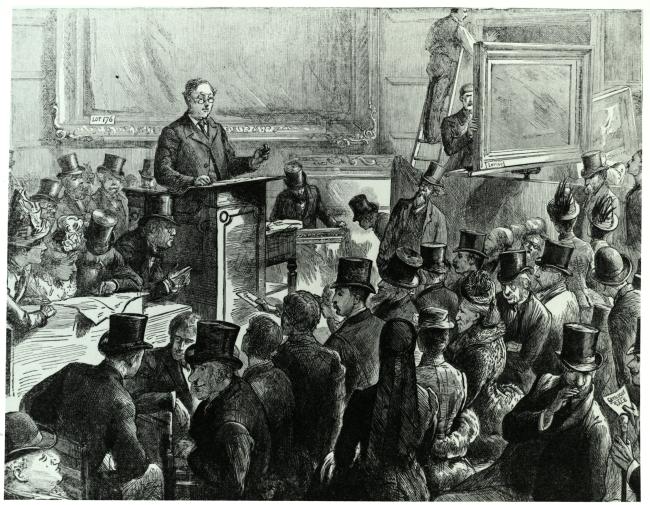
A Productive Friendship
Doyle and Powerscourt frequently travelled to auctions in London and further afield to view and select works of art for purchase. They were a recognisable double act within auction circles and were hugely successful in securing important pieces for the collection. Their success was most definitely due to their knowledge and discerning eye but in some cases they were in the right place at the right time, and took opportunities at the presented themselves.
There was a piece of luck!
Besides this treasure there is a beautiful little picture, also by Rembrandt, which I had a hand in acquiring for Dublin with Henry Doyle. We were attending a sale at Christie's, and he was waiting for a portrait of a Lord Lieutenant of Ireland, Lord Northington, by Sir Joshua Reynolds, but before that came up there was put upon the easel a small landscape by Rembrandt, " The Flight into Egypt." Mr. Agnew, as well as others, was attending the sale, but his attention happened to be called off at that moment, and the picture hung at something about 400 guineas. I said to Doyle, " Never mind the Lord Lieutenant ; don't let that Rembrandt go at that price ! " He made a bid, and the little gem was knocked down to us. There was a piece of luck ! Agnew came back and said, " What has become of the Rembrandt ? " I said, " We have got it for the National Gallery of Ireland." "Oh ! " he said, " if it has gone to the nation I do not mind."
Viscount Powerscourt, A Description and History of Powerscourt, 1903
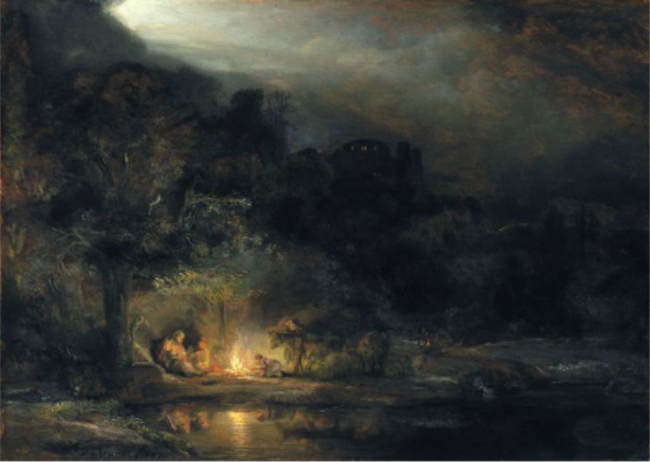
Collecting Masterpieces
A modest annual purchasing grant of £1,000 had been granted to the Gallery in 1866, and in 1882 an additional special grant of £1,000 was authorised by William Gladstone, the British Prime Minister, for the purchase of works from the sale of the Hamilton art collection, one of the finest collections in Europe. The grant, secured by Powerscourt, enabled Doyle to buy five paintings including works by Poussin, Antonio Palma and Giovanni di Pietro (Lo Spagna).
Other masterpieces of the collection acquired during Doyle’s tenure include Titan’s Ecce Homo and Reynolds’s Portrait of Charles Coote, 1st Earl of Bellamont. He also initiated a policy of buying Irish artworks, acquiring The Opening of the Sixth Seal by Francis Danby and George Barret’s View of Powerscourt Waterfall. Daniel Maclise’s The Marriage of Strongbow and Aoife also entered the collection in Doyle’s time, presented by board member Sir Richard Wallace in 1879.
